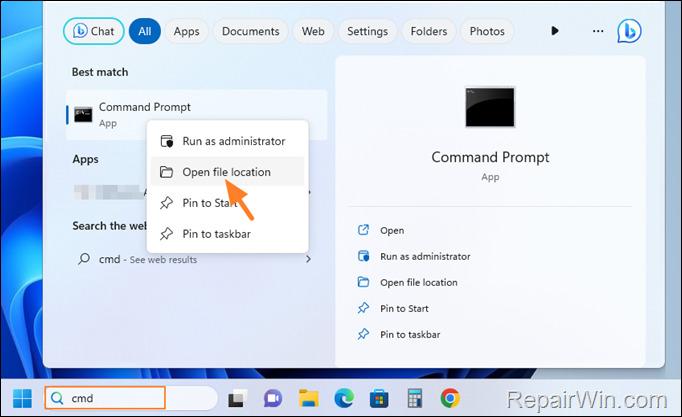.single .post-author, .post-date {
text-transform: none;
}
,
Last updated: February 29th, 2024
If you often need to run PowerShell or Command Prompt as an administrator, then this article will help you a lot.
To run any program with administrator rights in Windows you have to right-click on the program’s shortcut and select “run as administrator”. However, when you are a system administrator or developer, it is annoying to have to do these steps every time you want to open Command Prompt or PowerShell/Terminal with administrative privileges (aka “in elevated mode”).
In this article we will show you how to force PowerShell, Terminal or Command Prompt always open with administrator rights.
How to Always Run Command Prompt, PowerShell or Terminal as Administrator.
- Always Open Windows PowerShell as Admin.
- Always Open Windows Terminal as Admin.
- Always Open Command Prompt as Admin.
How to Always Open PowerShell As Administrator.
To run Windows PowerShell always as administrator, do the following:
1. In the search bar type “powershell“.
2. Then right-click in Windows PowerShell app in the results and select Open file location.


3. Now right-click again on Windows PowerShell shortcut and choose Properties.


4. At ‘Shortcut’ tab, click Advanced.


5. At ‘Advanced Properties’ window, check the Run as administrator checkbox and then click OK twice to apply your setting.


6. That’s it! From now on, when you open the Windows PowerShell shortcut, it will always run as administrator.*
* Note: To make your life easier, you can pin this PowerShell shortcut on the taskbar for easy access, by doing the following:
a. Right-click on Windows PowerShell shortcut and choose Show more options.


b. Now click Pin to Taskbar and you’re done! From now on, when you click the PowerShell shortcut created on the taskbar, Windows PowerShell will always open as an administrator.


How to Always Open Terminal As Administrator.
If you own Windows 11, or if you have installed Windows Terminal (aka “Terminal”) on your Windows 10 computer, here is the way to always run Terminal with administrative rights.
1. In the search bar type “terminal” and then open the Terminal App.


2. Now click the drop-down arrow next to the new tab (+) option and select Settings from the menu.


3. Now choose Windows PowerShell from the left pane and then Turn on the “Run this profile as Administrator” switch to run PowerShell as Administrator automatically. When done, click Save.


4. The choose Command Prompt on the left and set to ON the “Run this profile as Administrator” switch, if you want to always open command prompt as administrator while terminal mode.


How to Always Open Command Prompt as Administrator.
If you want to always open Command Prompt with Administrative permissions:
1. In the search bar type “cmd” or “command prompt“.
2. Then right-click in Command Prompt app in the results and select Open file location.


3. Now right-click again on Command Prompt shortcut and choose Properties.


4. At ‘Shortcut’ tab, click the Advanced button.


5. Check the Run as administrator checkbox and then click OK twice to save the setting.


6. You’re done! From now on, when you open Command Prompt, it will always run as administrator.*
* Note: To make your life easier, you can pin this Command Prompt shortcut on the taskbar, by doing the following:
a. Right-click on Command Prompt shortcut and choose Show more options.


b. Click Pin to Taskbar and you’re done! From now on, when you open the Command Prompt shortcut created on the taskbar, Command Prompt will always run as an administrator.


That’s all folks! Did it work for you?
Please leave a comment in the comment section below or even better: like and share this blog post in the social networks to help spread the word about this problem.

- Author
- Recent Posts
- How to Always Open PowerShell or Command Prompt as Administrator. – February 29, 2024
- FIX: Outlook emails or folders are missing. (Solved) – February 22, 2024
- FIX: Chrome Remote Desktop unable to Connect to host. – February 20, 2024


